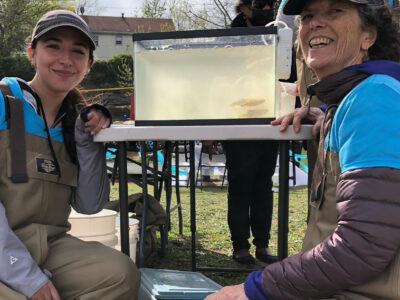The New York Times reports that unless the 11-year drought that has parched the southwestern United States suddenly ends, the water level of Lake Mead—the largest reservoir in the United States—could drop below a critical demarcation level of 1,075 feet for the first time, triggering emergency water provisions that would significantly reduce water deliveries to Nevada and Arizona. Las Vegas gets about 90 percent of its water from the reservoir.

Lake Mead was created in the 1930s with the building of the Hoover Dam, south of Las Vegas, Nevada.
Along with Lake Powell (the second largest man-made reservoir) Lake Mead is the key to water storage and allocation for the Colorado River, whose watershed is shared by seven U.S. and two Mexican states.
The plan now is to divert water from Powell to Mead, but there is no guarantee it will work.
Lake Mead is now only 15 inches higher than its all-time low, set in 1956. Pat Mulroy, general manager of the Southern Nevada Water Authority, told the Times that “if the river flow continues downward and we can’t build back up supply, Las Vegas is in big trouble.”

Adding to worries, the Hoover Dam is also a major source of electricity for Arizona, Nevada and California. If the level of the reservoir drops below 1,050 feet, turbines will cease to function and the electricity will stop. According to the Bureau of Reclamation, the Hoover Dam produces about 4 billion kilowatt hours of electricity per year – enough to serve 1.3 million people.
The potential failure of dam electricity highlights yet another way in which water and energy crises are maddeningly intertwined. Twenty eight percent of the electricity the dam produces cheap is used by the Metropolitan Water District of Southern California. The districts pumps water across the Colorado River Aqueduct–providing water for much of southern California.

Overall, California uses a staggering 19 percent of its electricity to move water around, which suggests the possibility of a vicious cycle of water shortages exacerbating energy shortages, causing water shortages, and so on.
It’s hard to overstate the significance of Colorado River water troubles. By some counts, the Colorado river provides drinking and irrigation water for 30 million people not counting the “virtual” Colorado river water the rest of use in the form of produce we buy that was irrigated from the river.
The news is not all bad; between 2000 and 2009, average per capita daily water use in Phoenix and Las Vegas dropped about 20 percent, a result of municipal conservation efforts. Unfortunately, population also exploded, growing about 30 percent in Las Vegas, and 20 percent in Phoenix from 2000 to 2007—making them the number one and two fastest growing cities in the country according to Forbes.
But Las Vegas and Phoenix are not alone. Across the United States, water-starved regions are experiencing the fastest population growth – 9 out of 10 of the fastest growing counties are in the South or West, places under severe threat of water shortages.
Clearly, it’s not a sustainable trend.
—




Not only rhe level of water in the dam, I worry about the underground eater-level downstream from the dam may lower and cause serios affects in the long run. The upstream area may have natural amount of water to seep underground. In the dam area might have more water seeping down at the begining and in the early years, but the collection of sediment will plug the ground at the bottom of the dam and cuased lrss water to seep downward. Dams may benefit for water management in particular area, but damage the water-ecosystem in general.